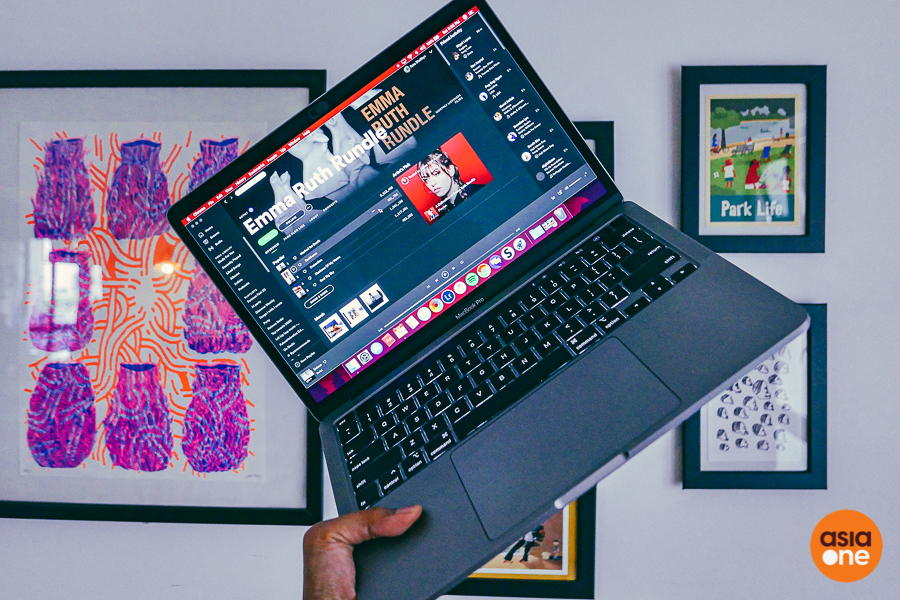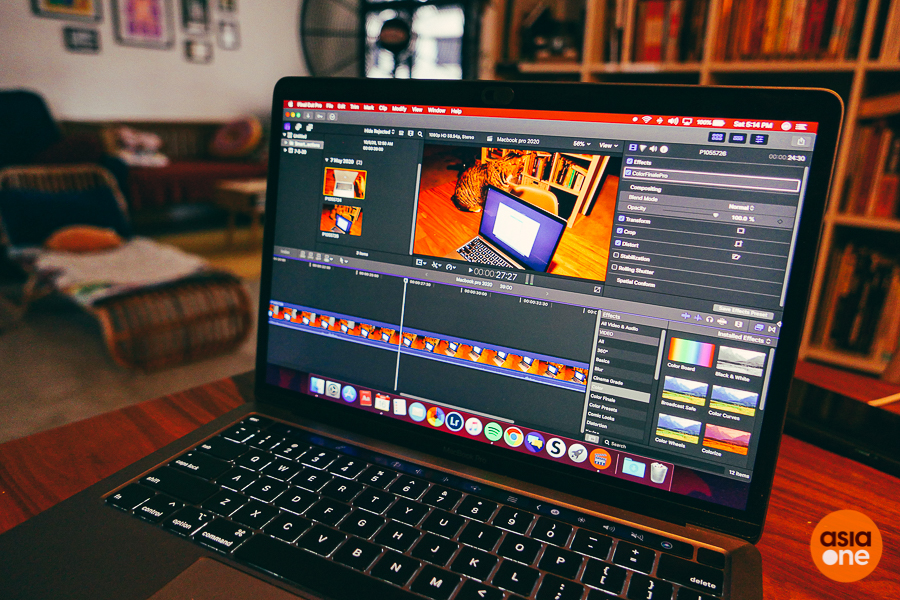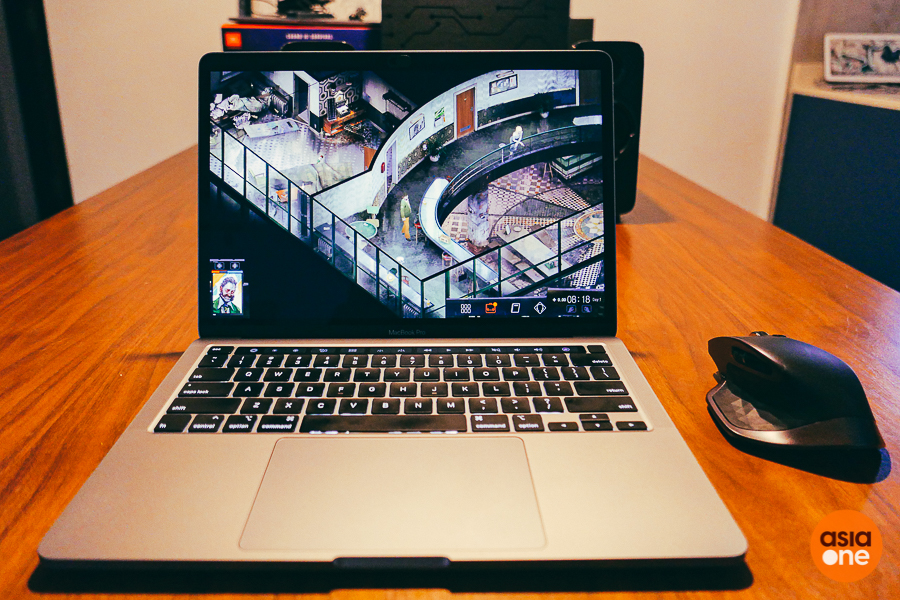Upgrading your MacBook Pro is finally worth it in 2020, but it'll flatten the curve (of your wallet)


That’s right baby, everyone’s favourite MacOS workhorse is back! And right on time, too, during a global pandemic that requires people to rely on dependable personal computers while working from home. So long as your internet connection doesn’t suddenly go kaput, that is.
All the things we love about the MacBook Pro (still on the fence about the necessity of the Touch Bar) is here. The key difference now is that it comes with a keyboard that doesn’t tend to fail repeatedly.
I’m sure that I’m not the only one who’s been holding off on upgrading MacBook Pros for a while now. The biggest reason why I haven’t been convinced to ditch my 2015 MacBook Pro (with all the legacy ports!) is that Apple supposedly revolutionised typing by introducing a butterfly keyboard mechanism in their laptops… to disastrous results.
Like the winged arthropod, Apple’s innovative endeavour is indeed beautiful but ultimately fragile. That’s no longer the case here because Apple’s most important laptop finally has what it deserves after five years of goofing up: a decent keyboard.

But on top of a redesigned scissor-switch keyboard called the Magic Keyboard (magically reliable, that’s for sure), the 13-inch MacBook Pro packs more than a few upgrades on the insides. The default specs are much higher this time round with an upgraded quad-core 10th Gen Core i5 processor, 16GB of fast LPDDR4X RAM, and a 512GB SSD.
That’s assuming if you didn’t go for the entry-level MacBook Pros, which utilises Intel’s 8th Gen Core processor. They’re a lot cheaper (prices start at $1,899), but at the cost of being slower with only two Thunderbolt 3 ports, lower storage, and RAM. I imagine it’ll still serve a good amount of users well if they need something a wee bit more capable than a MacBook Air.
[[nid:484924]]
Speaking of the MacBook Air, Apple continues to blur the lines of division between its 13-inch Air and Pro models. It’s now odd to even call the MacBook Air a light device, considering that the 13-inch MacBook Pro weighs just 0.13kg more. Plus, the Air comes with 10th Gen Intel processors by default this year, which makes it seem faster than an entry-level MacBook Pro on the surface.
But the difference is clearer when you start using the two — MacBook Air models just aren’t built for heavy workloads.
So now you have no choice in the matter; if you want the full 13-inch MacBook Pro experience that’s worth the upgrade, you’ll need to fork out at least $2,699 for a premium model. Which is exactly what I had for my review unit.
I tend to forget that MacBook Pros are capable machines because the smoothness of operating daily tasks on them just fades into the background. If we were to take a page out of a Steve Jobs quote book, it just works.

From the get-go, the benefits of the 10th Gen processors in tandem with bigger RAM are obvious. The laptop held its own against my workload stress test, which included multiple tabs on Chrome, a word processing app, Lightroom, Pixelmator, Spotify, and multiple chat apps at the same time.
Final Cut Pro — the bane of my MacBook Air 2020’s existence and the cause of frequent spinning beach balls on my 2015 MacBook Pro — actually runs well on this year’s model with noticeably faster rendering. I rarely even heard the fans running hot during heavy and/or multitasking operations.

Ultimately, what we’re paying (through the nose) for is the latest Intel Iris Plus graphics. The cheaper 13-inch MacBook Pro is still using a processor graphics card that was introduced last year, which is fine, but I’d prefer the faster graphics performance for a pro-level laptop, please.
Performance isn't an issue when it comes to handling Adobe’s suite of apps, but the true test lies in gaming. The laptop did just fine running Disco Elysium on max settings but that’s when the fans started to audibly whine.

Back to the Magic Keyboard. It isn’t different from the keyboard on the MacBook Air, which is to say, they’re very good. Compared to my 2015 MacBook Pro model, the keyboard now feels more satisfying to type on for some reason — perhaps the key travel has improved to offer more solid thunks when typing. Not as good as a mechanical keyboard of course, but eons more gratifying than whatever came before.
This is my first encounter with the Touch Bar too. Admittedly, it was fun to play with at the beginning but after a week of usage, I didn’t know what to do with it. Maybe I couldn’t find enough apps to take advantage of the multi-touch controls or maybe it’s just not as revolutionary as Apple thought it’d be. But at least there’s a physical escape key (which the company tried to kill in 2016) and a snappy fingerprint sensor.

There’s not much to be said about the 13-inch MacBook Pro’s other features because they’re all as excellent as expected. The huge trackpad remains one of the best in the biz; the stereo speakers offer superb bass and depth; the Retina Display is as brilliant and sharp as ever with higher brightness levels and support for wide colour gamut.
As for battery life, it’s surprisingly beefy enough to last longer than a standard workday, only requiring an urgent charge after close to ten hours. Ample Thunderbolt 3 ports are nice, but would it kill Apple to let MacBook Pro users have some legacy connections? Rummaging through drawers for a dongle to transfer media off an SD card will never stop being a chore.

The least pro-level aspect of the machine is still the inbuilt webcam which shoots mediocre 720p video. Sure, nobody expected video conferencing to suddenly become essential in 2020, but it would be nice to see grainy webcam footage go extinct from this point onwards.

In a recent conversation with a friend, we talked about why custom PC desktops are making a huge comeback, and one of the possible reasons is that Apple could be driving a significant portion of their consumer base away in recent years.
What they’re selling now is the concept of premium. The message they’re sending out is that any MacOS user who wants better performance must be ready to pay way more than they did before; hard-earned cash that could probably be used to purchase or build a Windows device for cheaper without compromising power.
But then again, the amount you’re splurging is the cost of getting a MacBook Pro that just works, and work it will for the many years to come. Maybe it’ll even take another five years before the next upgrade — a comforting, economical notion to have in these precarious times.
ilyas@asiaone.com